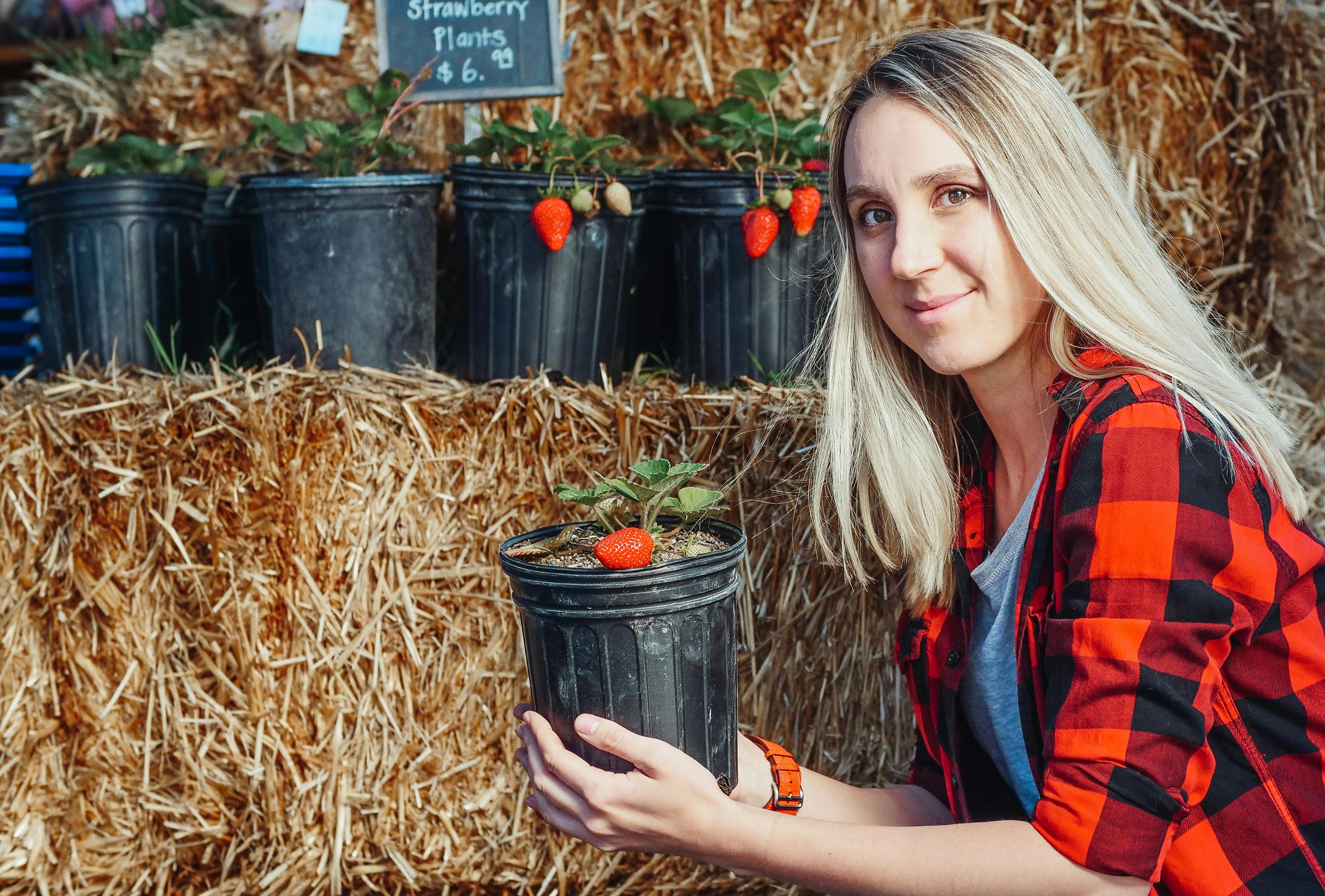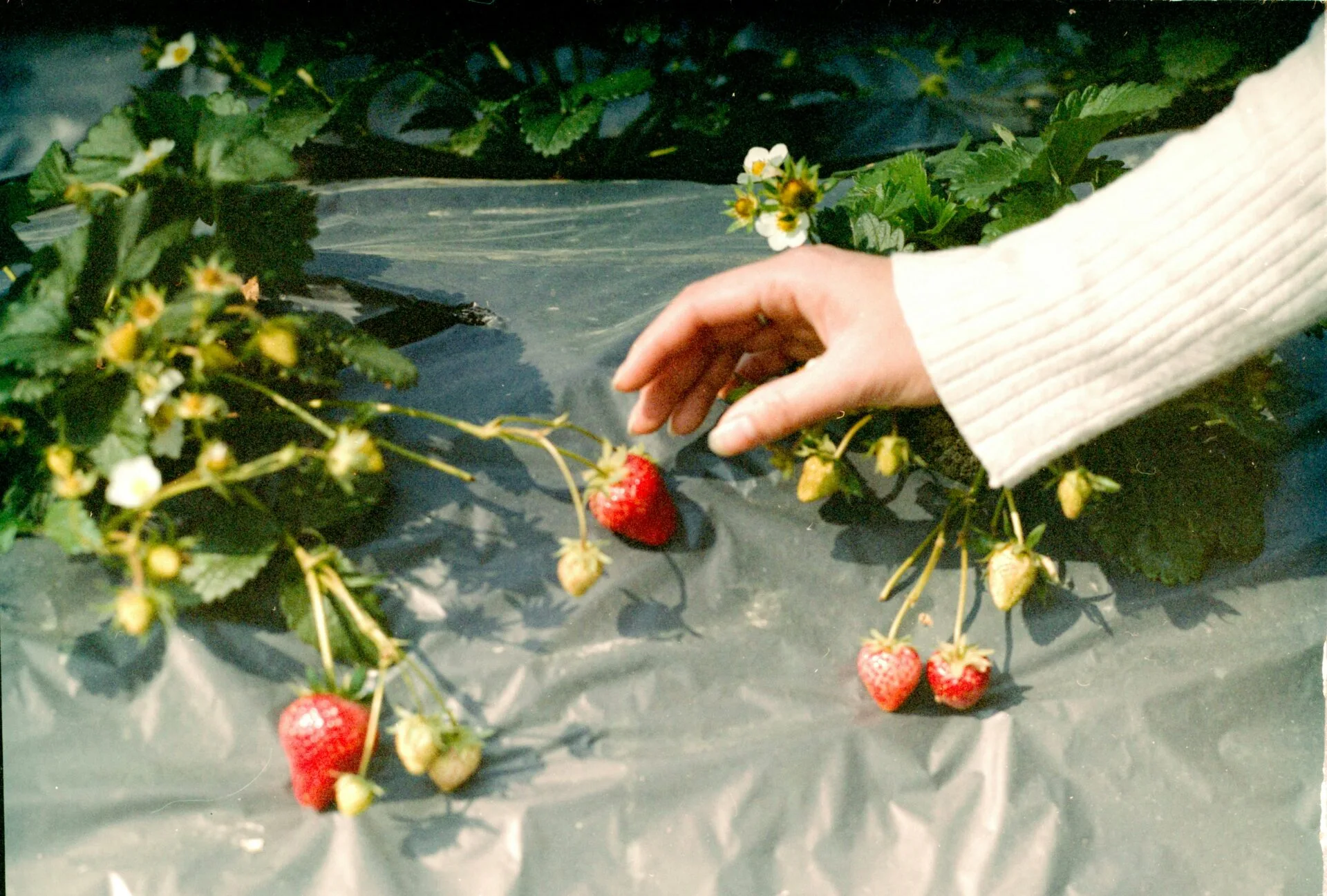Strawberries are a versatile and delicious fruit that can be grown in a variety of climates. While some types of strawberries thrive in cold climates, others prefer warm weather. In order to produce the highest quality and quantity of strawberries, it is important to understand the ideal climate for growing them. This includes factors such as temperature, humidity, sunlight, and soil type. By understanding these conditions, you can ensure the best possible outcome when growing strawberries in any climate.Ideal climate conditions for growing strawberries include full sun exposure, high humidity, and temperatures ranging from 60-85 degrees Fahrenheit. Strawberries require well-drained soil with a pH between 5.5 – 6.8 and should be watered regularly to keep the soil moist but not soggy. Strawberries benefit from abundant fertilization throughout their growing season, especially nitrogen and potassium. For best results, select an area with good air circulation to reduce the risk of fungal diseases.
Temperature Requirements for Growing Strawberries
Strawberries are a popular fruit, but they can be a challenge to grow. Temperature is a key factor in successfully growing strawberries. Strawberries prefer cooler climates, so they need temperatures between 55°F and 75°F. Temperatures above 80°F can cause the berries to overripen quickly or even dry out before they have a chance to ripen properly. In extremely cold climates, strawberriees may not be able to survive without the protection of mulch or winter protection covers.
Strawberries also require very specific temperatures during different parts of their growing cycle. During flowering and fruit development, cooler temperatures of 55°F to 65°F are best for producing large, healthy fruits. But when the fruits reach maturity and during harvest season, warmer temperatures between 65°F and 75°F will help ensure that the berries ripen properly before being harvested.
It’s important to remember that strawberries need both cool and warm temperatures throughout their growing cycle in order for them to produce sweet, juicy fruits. With proper temperature control, you’ll be able to enjoy delicious strawberries from your own garden!
Soil Requirements for Growing Strawberries
Growing strawberries is a rewarding experience, but to ensure successful harvest, they need the right soil conditions. When selecting a site to plant strawberries, you’ll need to consider the type of soil and its characteristics.
The ideal soil for growing strawberries should be light and well-drained. It should have a neutral pH level between 5.5 and 6.5, meaning it is neither too acidic nor too alkaline. The soil should also have plenty of organic matter such as compost or manure, as this will help increase the fertility of the soil.
Additionally, it is important to make sure that the soil has good drainage so that it does not become waterlogged or flooded. You can use raised beds if your garden is prone to flooding, or add drainage material such as sand or gravel to increase drainage capabilities. If the drainage is poor, then you may need to replace some of the existing soil with draining material in order to improve drainage capabilities.
Finally, it’s important to check your soil for any weeds that may be present as these can take away nutrients from your strawberry plants if left unchecked. If necessary, use herbicides or cultivate around your strawberry plants in order to remove any weeds from the area.
Overall, providing your strawberry plants with well-drained and nutrient-rich soil that has a neutral pH level will ensure they thrive and produce a bountiful harvest come summertime!
Sunlight Requirements for Growing Strawberries
Growing strawberries requires plenty of sunshine which is beneficial for the development of the fruit. Strawberries need around six to eight hours of direct sunlight per day during the fruiting season to ensure proper growth. When grown in areas with full sun, the plants will produce bigger and sweeter fruits, as well as more of them. If you live in an area with limited sun exposure, then you should choose a location that receives at least four hours of sun daily. It’s also important to note that too much shade can cause a decrease in fruit production.
When planting strawberries, it is recommended that you place them in an area where they will get morning sunlight and some afternoon shade. This will help protect them from late afternoon heat that can cause damage to the plants and reduce their yield. Additionally, if your region gets a lot of rain during the summer months, then it’s best to find an area with good air circulation so that your strawberry plants don’t get waterlogged or suffer from rot or mildew.
If you live in an area with intense heat or cold winters, it’s best to provide some shelter for your strawberry plants by installing a cold frame or greenhouse. This will help protect them from extreme temperatures and provide shelter from strong winds which can damage foliage and reduce yields. A cold frame or greenhouse also provides protection from pests such as birds and insects that can harm your strawberry crop.
Watering Requirements for Growing Strawberries
Strawberries are a popular fruit that can be grown in the home garden. It is important to understand the watering requirements for growing healthy and productive strawberry plants. Proper watering is essential for growing healthy, productive strawberry plants. Water should be applied at a rate of 1 – 1.5 inches per week, depending on the weather conditions and soil type. During periods of extreme heat or dryness, it may be necessary to increase the amount of water applied to your strawberry plants. Additionally, water should be applied directly to the soil around the plant, avoiding wetting the foliage as much as possible.
Soaker hoses and drip irrigation systems are both excellent methods for applying water to your strawberry plants and can help conserve water by delivering it directly to where it is needed most – the soil around the roots. If you choose to use an overhead sprinkler system, it is best to water early in the morning so that foliage has time to dry before nightfall which can help reduce fungal diseases.
It is also important not to overwater your strawberry plants as too much water can cause root rot or other diseases due to overly saturated soils. To check if your strawberries need watering, simply insert your finger into the soil around them about two inches deep; if it feels dry then they need watering. Always make sure that you allow time for drainage after watering; standing water around strawberry plants can cause root rot or other problems such as fungal disease due to overly wet conditions.
Overall, understanding proper watering requirements for growing strawberries is essential for producing healthy and productive plants in your home garden or patch. With a little bit of effort and care you can have a bountiful harvest of sweet strawberries!

Mulching Requirements for Growing Strawberries
Mulching is an important part of growing strawberries and it helps keep the soil moist, reduce weeds and increase the overall productivity of the strawberry plants. Strawberries should be mulched with a straw, hay or plastic mulch. The type of mulch chosen will depend on the conditions in the garden, as well as personal preference.
When using straw or hay mulch, it is important to make sure that the material is free of weed seeds and disease-causing organisms. Plastic mulches can also be used to control weeds and help retain moisture in the soil. It is important to make sure that any plastic used is UV resistant and approved for use in food production.
In areas where there are heavy rains or irrigation, it is important to make sure that the mulch does not become waterlogged as this can cause root rot in strawberry plants. If this occurs, it is best to remove some of the excess moisture and replace it with a fresh layer of mulch.
Mulching should be done after planting strawberries and then again in spring before new growth begins. The depth of the mulch should be 2-4 inches (5-10 cm) depending on local climate conditions. In cold climates, deeper layers of mulch may be needed for winter protection from frost damage. In warm climates, shallower layers may be suitable as too much mulch can cause excessive heat build up around strawberry plants which can lead to fruit scorching or sunburned fruits.
It is also important to check the condition of your mulch every few months and replace any material that has broken down or become contaminated with weeds or disease organisms. This will help keep your strawberry patch healthy and productive throughout the growing season.
Fertilizer Requirements for Growing Strawberries
Strawberries are a popular fruit that can be easily grown in the home or garden. To ensure a healthy and bountiful crop of strawberries, it is important to provide adequate fertilizer. Fertilizing helps to replenish the soil of essential nutrients needed for healthy growth. It is best to apply fertilizer when the plants are actively growing and producing flowers and fruit.
Fertilizer should be applied at least once per month during the growing season with a balanced, all-purpose fertilizer. Apply according to the instructions on the product label, taking care not to over-fertilize. Applying too much fertilizer can burn the roots of the plants or cause excessive leaf growth at the expense of flower and fruit production.
In addition to fertilizer, it is also important to add organic matter such as compost or aged manure to the soil each year. This will help to improve soil structure, increase nutrient availability, and promote healthy root growth which will result in healthier plants and bigger yields of delicious strawberries.
Propagation Requirements for Growing Strawberries
Strawberry plants can be propagated in a variety of ways, including direct seed, runners, and vegetative cuttings. Each method has its own requirements for successful propagation. Direct seed is the easiest and most economical way to propagate strawberries. Direct seeding involves sowing seeds directly into the garden or in pots and containers. It is important to choose an appropriate location with well-drained soil and full sun exposure for direct seeded plants. The soil should be kept moist until germination occurs. Once the seedlings have emerged, they should be thinned to allow for adequate spacing between plants.
Runners
Runners are shoots that extend from the mother plant, producing new daughter plants along its path. When propagating by runners, it is important to choose strong healthy mother plants with plenty of runner production potential. The runners should be carefully separated from the mother plant and planted in prepared beds with moist soil at least 8 inches apart from each other. The roots of the runner should be lightly covered with soil and watered regularly until established.
Vegetative Cuttings
Vegetative cuttings are taken from existing strawberry plants and can be used to propagate new plants quickly and easily. Cuttings should be taken from healthy non-flowering stems about 4 inches long with at least two leaves on each cutting. Cuttings can be rooted in a variety of ways including a potting mix or water solution, but it is important to keep them moist until they form roots which will usually take about 2-4 weeks depending on temperature and humidity levels. Once rooted, the cuttings should be transplanted into prepared beds or containers with moist soil and given regular water until established.
Propagating strawberries is a great way to expand your strawberry patch without having to purchase additional seedlings or runners every year. By following these simple propagation requirements you will have a bountiful harvest of sweet strawberries year after year!

Conclusion
Strawberries are one of the most popular and widely grown crops in the world. To ensure maximum yields, growers must be aware of the ideal climate conditions for growing strawberries. Strawberries prefer a mild climate with temperatures between 45-85°F and plenty of sun and water. In addition, the soil must be well-draining with a pH of between 5.5 and 6.5. Proper care and maintenance must also be taken to ensure healthy plants and high yields. With these things in mind, strawberry growers can create the perfect environment for their plants to thrive.
Ultimately, understanding how to create an ideal climate for growing strawberries is key to success in cultivating this crop. With proper knowledge of the key environmental factors that affect strawberry growth, growers can create an environment that will help their plants reach their full potential and produce abundant yields of juicy, delicious berries year after year.



